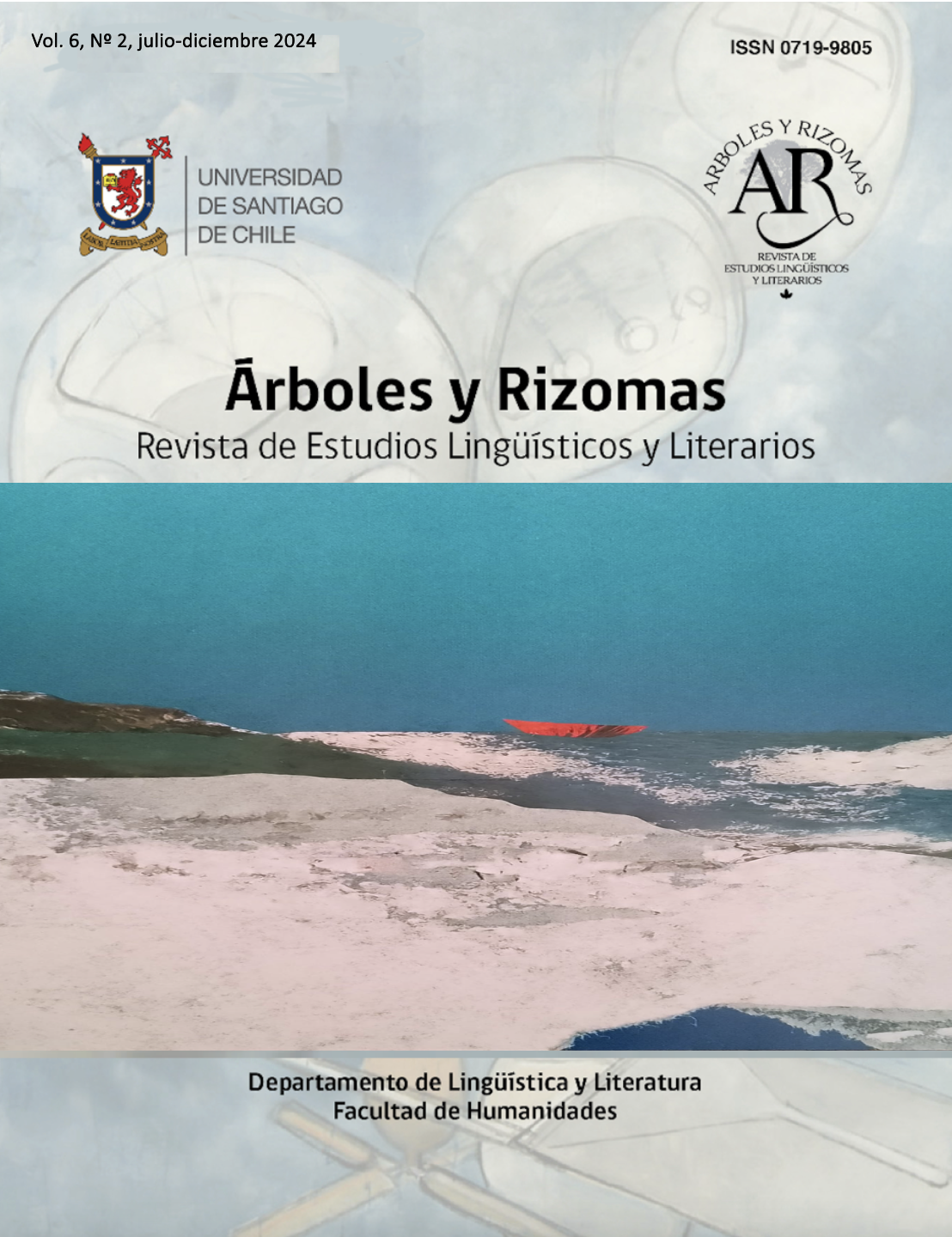Empleo de metodología R2L con translenguaje para apoyar la producción escrita del género discursivo de rutina diaria
DOI:
https://doi.org/10.35588/ayr.v6i2.6794Palabras clave:
Reading to Learn (R2L), translenguaje, rutinas diarias, Lingüística Sistémico-funcional (LSF), investigación-acción pedagógicaResumen
Este artículo presenta un proyecto de investigación-acción pedagógica realizado en una institución chilena de educación superior que explora la enseñanza de la producción escrita en inglés como lengua extranjera (ILE). Este estudio examina la metodología Reading to Learn (R2L), basada en los principios de la Lingüística Sistémico-funcional (LSF), que proporciona apoyo sistemático para que los estudiantes produzcan una variedad de géneros discursivos. La intervención consta de dos fases en las que se emplea la metodología R2L para la enseñanza del género discursivo de rutina diaria. En este estudio, la metodología R2L se centra en permitir que los estudiantes desarrollen los recursos lingüísticos necesarios para la producción tanto de rutinas diarias en primera persona del singular como de rutinas diarias en tercera persona del singular. Para ello, la intervención utiliza dos herramientas de enseñanza: los pasos de la metodología R2L y translenguaje. Los resultados revelan que la metodología R2L junto con translenguaje mejoraron significativamente la capacidad de los estudiantes para producir rutinas diarias bien estructuradas y con un propósito claro, incorporando una serie de opciones lingüísticas.
Descargas
Referencias
Achugar, M., & Carpenter, B. D. (2012). Developing disciplinary literacy in a multilingual history classroom. Linguistics and Education, 23(3), 262-276.https://doi.org/10.1016/j.linged.2012.05.003
Bruner, J. S. (1978). The role of dialogue in language acquisition. In A. Sinclair, R. J. Jarvelle & W. J. M. Levelt (Eds.), The Child's Concept of Language. Springer-Verlag.
Byrnes, H., Maxim, H. H., & Norris, J. M. (2010). Realizing advanced foreign language writing development in collegiate education: Curricular design, pedagogy, assessment. The Modern Language Journal, 94(1), 1–235.https://doi.org/10.1111/j.1540-4781.2010.01136.x
Canale, M., & Swain, M. (1980). Theoretical Bases of Communicative Approaches to Second Language Teaching and Testing. Applied Linguistics, 1(1), 1-47.https://doi.org/10.1093/applin/I.1.1
Cancino, M., & Díaz, G. (2020). Exploring the Code-Switching Behaviours of Chilean EFL High School Teachers: A Function-Focused Approach. Profile: Issues in Teachers’ Professional Development, 22(2), 115-130.https://doi.org/10.15446/profile.v22n2.81152
Council of Europe (2020). Common European Framework of Reference for Languages: Learning, Teaching, Assessment. Council of Europe Publishing.https://www.coe.int/en/web/common-european-framework-reference-languages
De Oliveira, L., & Iddings, J. (2014). Genre pedagogy across the curriculum. Equinox.
Dreyfus, S., Humphrey, S., Mahboob, A., & Martin, J. R. (2016). Genre pedagogy in higher education: The slate project. Palgrave Macmillan.
García, O., & Kleyn, T. (Eds.) (2016). Translanguaging with Multilingual Students. Learning from Classroom Moments. Routledge.
García, O., & Wei, L. (2014). Translanguaging: Language, Bilingualism and Education. Palgrave Macmillan.
Gibbons, P. (2003). Mediating Language Learning: Teacher Interactions with ESL Students in a Content-Based Classroom. TESOL Quarterly, 37(2), 247–273.https://doi.org/10.2307/3588504
Halliday, M. A. K. & Matthiessen, C. M. I. M. (2004). An introduction to functional grammar (3rd Ed.). Arnold.
Halliday, M. A. K., & Matthiessen, C. M. I. M. (2014). Halliday’s Introduction to Functional Grammar (4th ed.). Routledge.
Herazo Rivera, J. D., Becerra, T., García-Montes, P., Sagre Barbosa, A., Anaya, C., & Pastrana, J. (2021). Reading to Learn and EFL Students’ Construction of Spoken Biographical Recounts. Íkala, Revista de Lenguaje y Cultura, 26(1), 41-60.https://doi.org/10.17533/udea.ikala.v26n01a06
Humphrey, S., Droga, L., & Feez, S. (2012). Grammar and Meaning. The Primary English Teaching Association Australia (PETAA).
Kemmis, S., & McTaggart, R. (Eds.). (1988). The action research planner (3rd ed.). Deakin University Press.
Martin, J. R., & Rose, D. (2007). Working with Discourse: Meaning Beyond the Clause (2nd ed.). Continuum.
Martin, J. R., Matthiessen, C. M. I. M., & Painter, C. (2010). Deploying Functional Grammar. Commercial Press.
Menco-Haeckermann, V. (2021). From Curriculum Demands to Genre Pedagogy: Bilingual Adaptation of Reading to Learn for an L2 Lesson Planning. Signo, 46(86), 168-182. https://doi.org/10.17058/signo.v46i86.16522
Mendoza, D. (2022). Using a Reading to Learn (R2L) Adaptation to Support Students’ Language Learning in the Production of Spoken Daily Routines [Master's Thesis, Pontificia Universidad Católica de Chile]. Repositorio UC. https://doi.org/10.7764/tesisUC/LET/63721
Norton, L. (2009). Action Research in Teaching and Learning. A practical guide to conducting pedagogical research in universities. Routledge.
Rose, D., & Martin, J. R. (2012). Learning to Write, Reading to Learn: Genre, knowledge and pedagogy in the Sydney School. Equinox.
Rose, D. (2019). Reading to Learn: Accelerating learning and closing the gap. Reading to Learn.
Seidlhofer, B. (2009). Understanding English as a Lingua Franca. Oxford University Press.
Troyan, F., Herazo, D., & Ryshina-Pankova, M. (2022). SFL pedagogies in language education: Special issue introduction. System, 104, 102694.https://doi.org/10.1016/j.system.2021.102694
Vygotsky, L. S. (1978). Mind in society: The development of higher psychological processes. Harvard University Press.
Descargas
Enviado
2024-07-30Publicado
Número
Sección
Licencia
Derechos de autor 2024 Diego Mendoza Godoy

Esta obra está bajo una licencia internacional Creative Commons Atribución 4.0.






